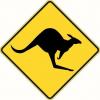Dear Neanders,
I am creating my basic plane set. I started with a LV block plane and after a few months I went to an also LV, Jack plane with multiple blades (actually two but two others on their way).
I am now considerring a smoothing plane and I need your advice.
A couple years ago I really thought cabinet scrappers could replace satisfactory a smoothing plane so I went to the way of block and Jack combined with scrappers for all my tasks... perhaps I am wrong. When considering a smoothing plane I also faced another doubt: either a classical LV no. 4 or 4 1/2 or a high end Japanese smoothing plane like Tsunezaburo azumashuseki (Blue 2 steel).
You guys, way more experient than myself with those hand tools, perhaps could compare card scrappers, traditional smoothing planes and Japanese ones for an amateur woodworking used to power tools but starting with hand tools also.
Thanks in advance for your input. It is very appreciated.





 Reply With Quote
Reply With Quote









